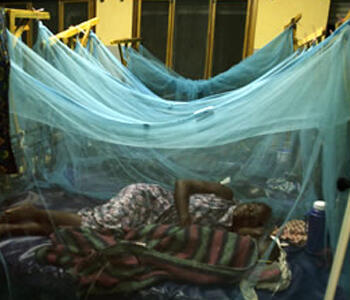
Insecticide resistance is rapidly evolving in malaria vectors and is reducing the efficacy of current control tools. That was the main message of LSTM Professor Hilary Ranson’s plenary session during the 6th MIM Pan-African Malaria Conference in Durban, South Africa. She warned that new insecticides will not become available within this decade and that key knowledge gaps remain that must be urgently addressed to prevent resistance compromising malaria control.
Despite a significant scale-up in malaria vector control in the last decade or so by distributing Long Lasting Insecticidal Nets (LLIN) throughout Africa no new insecticides for public health have been developed for the past 25 years. LLINs continue to be effective in most areas and remain the most suitable tool to prevent malaria transmission in Africa. But there is a very real danger that the growing insecticide resistance amongst vectors will severely hamper overall malaria control.
Reports of resistance to all insecticide classes are increasing and current bioassay methods are no longer sufficient to record changes in resistance.
‘Bioassays need to be improved to monitor resistance’, said Professor Ranson who is also scientific coordinator of AvecNet, a collaborative project between African and European researchers to develop and evaluate new tools for malaria control in Africa. ‘In addition’, Professor Ranson continued, ‘more research needs to be done to bridge the gap between the operational and the epidemiological impact of resistance as well as to ensure that the proposed resistance management strategies will be evidence based.’
So far the only guidance is given by WHO’s Global Plan for Insecticide Resistance Management in malaria vectors (GPIRM) which has produced guidelines on resistance management based on best available evidence to date.
The MIM conference is the largest gathering of the malaria community and therefore provides an opportunity to showcase novel findings, innovations and ground breaking research.